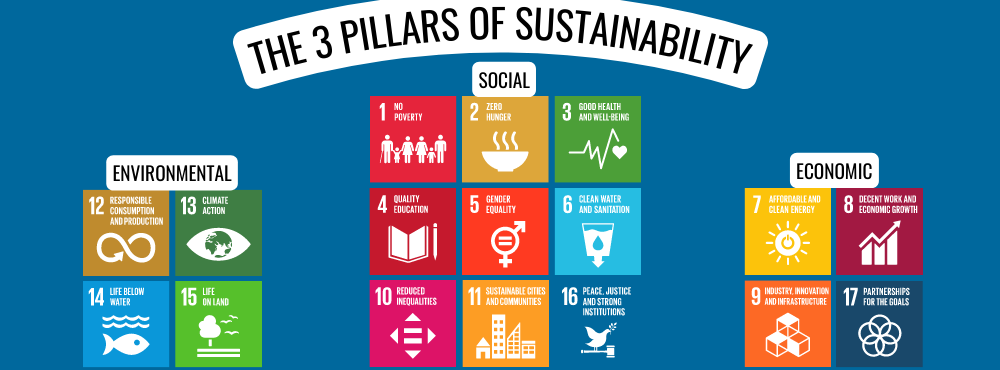The United Nations Sustainable Development Goals (UN SDGs) are a set of 17 goals with 169 targets that serve as a blueprint for a better and more sustainable future for all.
The SDGs were adopted by world leaders at the United Nations Sustainable Development Summit in 2015 and are intended to be achieved by 2030. The SDGs are universal, meaning that they apply to all countries and communities, regardless of their level of development.
Importance of Understanding the UN SDGs
Understanding the UN SDGs is crucial for individuals, businesses, and governments alike. The SDGs provide a framework for addressing global challenges, such as poverty, climate change, and inequality, and offer a roadmap for a more sustainable and equitable future.
In this blog post, we will provide an overview of the UN SDGs, their importance, and how individuals and organizations can contribute towards achieving them.
Background of the UN SDGs

The United Nations Sustainable Development Goals (SDGs) were adopted by 193 countries at the United Nations Sustainable Development Summit in 2015.
The SDGs are a continuation of the Millennium Development Goals (MDGs), which were established in 2000 and expired in 2015. While the MDGs focused primarily on eradicating poverty, the SDGs take a more comprehensive approach to sustainable development, addressing social, economic, and environmental issues.
Understanding the 17 SDGs and Their Targets
The 17 SDGs are designed to be integrated and indivisible, meaning that progress toward one goal will affect the achievement of other goals. Here is a brief overview of each goal and its targets:

- No Poverty: End poverty in all its forms everywhere.
- Zero Hunger: End hunger, achieve food security and improved nutrition, and promote sustainable agriculture.
- Good Health and Well-being: Ensure healthy lives and promote well-being for all at all ages.
- Quality Education: Ensure inclusive and equitable quality education and promote lifelong learning opportunities for all.
- Gender Equality: Achieve gender equality and empower all women and girls.
- Clean Water and Sanitation: Ensure availability and sustainable management of water and sanitation for all.
- Affordable and Clean Energy: Ensure access to affordable, reliable, sustainable, and modern energy for all.
- Decent Work and Economic Growth: Promote sustained, inclusive, and sustainable economic growth, full and productive employment, and decent work for all.
- Industry, Innovation and Infrastructure: Build resilient infrastructure, promote inclusive and sustainable industrialization, and foster innovation.
- Reduced Inequalities: Reduce inequality within and among countries.
- Sustainable Cities and Communities: Make cities and human settlements inclusive, safe, resilient, and sustainable.
- Responsible Consumption and Production: Ensure sustainable consumption and production patterns.
- Climate Action: Take urgent action to combat climate change and its impacts.
- Life Below Water: Conserve and sustainably use the oceans, seas, and marine resources for sustainable development.
- Life On Land: Protect, restore, and promote sustainable use of terrestrial ecosystems, sustainably manage forests, combat desertification, and halt and reverse land degradation and biodiversity loss.
- Peace, Justice and Strong Institutions: Promote peaceful and inclusive societies for sustainable development, provide access to justice for all, and build effective, accountable, and inclusive institutions at all levels.
- Partnerships for the Goals: Strengthen the means of implementation and revitalize the global partnership for sustainable development.
SDGs and the 3 Pillars of Sustainability
The SDGs can be broadly categorized into three key themes or pillars:
The three main categories of the Sustainable Development Goals (SDGs) are commonly referred to as the 3 Ps of sustainability: people, profit and planet – or, alternatively, the triple bottom line or three principles of sustainability. Each pillar encompasses specific targets that drive progress towards accomplishing the SDGs.
- Social
- Economic
- Environmental.

Here’s how the SDGs fit into each of the 3 pillars of sustainability:
Environmental:
SDG 12: Responsible consumption and production
SDG 13: Climate action
SDG 14: Life below water
SDG 15: Life on land
Social:
SGD 1: No poverty
SDG 2: Zero hunger
SDG 3: Good health and well-being
SDG 4: Quality education
SDG 5: Gender equality
SDG 6: Clean water and sanitation
SDG 10: Reduced inequalities
SDG 11: Sustainable cities and communities
SDG 16: Peace, justice, and strong institutions
Economic:
SDG 7: Affordable and clean energy
SDG 8: Decent work and economic growth
SDG 9: Industry innovation and infrastructure
SDG 17: Partnerships for the goals
The social goals (Goals 1-6, 10, 11, 16) focus on promoting equity and diversity, reducing poverty and inequality, social justice, improving health and education, peace-building, cultural sustainability and heritage, and quality of living enhancement.
The economic goals (Goals 7-9, 17) aim to promote sustainable and inclusive economic growth, decent work, and innovation.
The environmental goals (Goals 12-15) involve the protection of land, freshwater, oceans, forests, air, natural resources and wildlife. This pillar also includes the managing of resources: energy consumption, waste management, and C02 emissions.
How SDGs Are Interconnected
The SDGs are interconnected and interdependent, meaning that progress toward one goal will have an impact on the achievement of other goals.

For example, reducing poverty (Goal 1) can improve access to education (Goal 4), which in turn can increase economic growth (Goal 8), and ultimately lead to reduced inequalities (Goal 10).
Similarly, actions taken to combat climate change (Goal 13) can lead to improved health outcomes (Goal 3) and help protect ecosystems and biodiversity (Goals 14 and 15).
The Impact of the UN Sustainable Development Goals
While significant progress has been made toward achieving the SDGs, there are still many challenges that need to be addressed.
Since the adoption of the SDGs in 2015, significant progress has been made toward achieving them. According to the UN’s 2022 SDG Report, there have been some positive developments, including:
- The number of people living in extreme poverty has decreased, from 10.7% in 2015 to 8.6% in 2019.
- Access to basic education has improved, with primary school enrolment rates reaching 91% globally in 2020.
- Progress has been made towards gender equality, with more women holding political office and more girls completing primary and secondary education.
- Emissions of greenhouse gases have decreased by 5%, energy efficiency has increased by 7% and renewable energy consumption has risen by 24%
- The global maternal mortality ratio has declined, with an estimated 6.2 million maternal deaths averted between 2000 and 2017.
Challenges Faced in Achieving the SDGs

While progress has been made toward achieving the SDGs, there are still many challenges that need to be addressed.
Some of the challenges include:
- Inequality: Despite progress in some areas, inequality remains a significant challenge, with many people still living in poverty and lacking access to basic services.
- Climate change: The effects of climate change are becoming increasingly severe, with rising temperatures, more frequent natural disasters, and other environmental challenges.
- Conflict, war, and instability: Conflict, war, and instability in many parts of the world are hindering progress toward achieving the SDGs.
- COVID-19 pandemic: The COVID-19 pandemic has had a significant impact on progress toward achieving the SDGs, particularly in relation to poverty, health, and education.
The Role of Stakeholders in Achieving the SDGs
Achieving the SDGs will require the involvement of all stakeholders, including governments, civil society, the private sector, and individuals. Some of the key roles that stakeholders can play include:
- Governments: Governments have a crucial role to play in implementing policies and programs that support the achievement of the SDGs, including investing in basic services such as healthcare and education, promoting inclusive economic growth, and supporting vulnerable groups.
- Civil society: Civil society organizations can play a vital role in advocating for the SDGs, promoting awareness and engagement, and holding governments and other stakeholders accountable for progress toward the SDGs.
- Private sector: The private sector can contribute to achieving the SDGs by investing in sustainable development, promoting sustainable business practices, and developing innovative solutions to global challenges.
- Individuals: Individuals can support the SDGs by making sustainable choices in their daily lives, raising awareness and advocacy, and holding governments and other stakeholders accountable for progress towards the SDGs.
Final Thoughts
The UN SDGs represent a shared vision for a better world, and their achievement requires the involvement of all stakeholders.
Understanding the SDGs is crucial because it allows us to recognize the interconnectedness of global challenges and the need for comprehensive, integrated solutions.
The SDGs provide a roadmap for governments, the charitable and non-profit sector, the private sector, and individuals to work together towards a more sustainable and equitable world.
Final Call to Action
Achieving the SDGs requires the involvement of all stakeholders, and everyone can play a role in contributing towards achieving them.
Governments must create policies and programs that support sustainable development, the charitable sector must advocate for the SDGs, the private sector must invest in sustainable development and innovative solutions, and individuals must make sustainable choices in their daily lives. Together, stakeholders can make progress toward achieving the SDGs and creating a better world for all.


